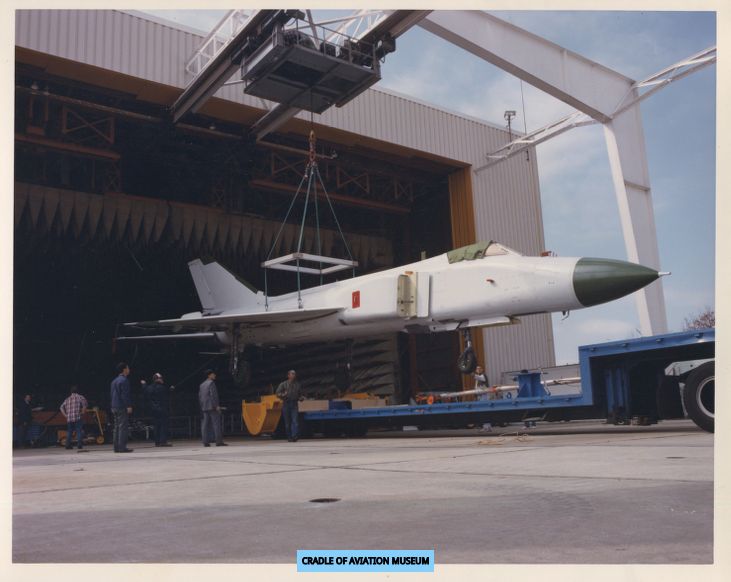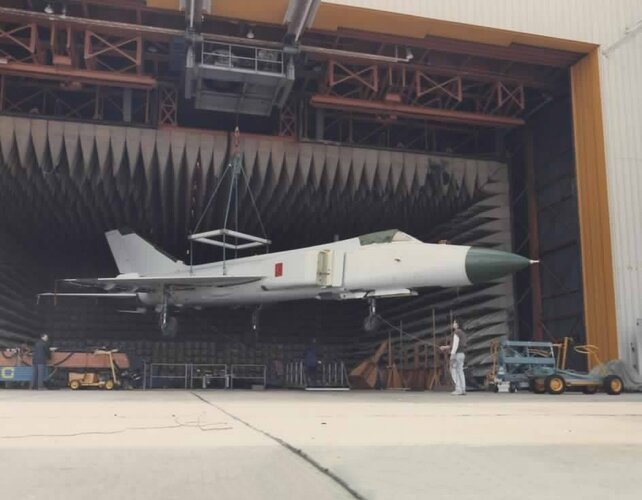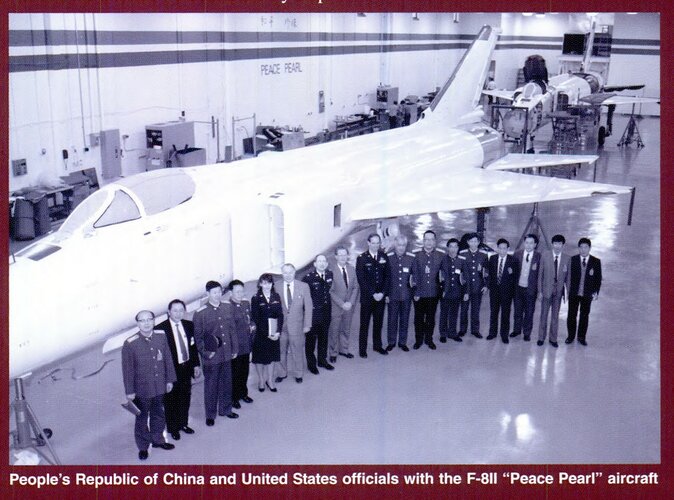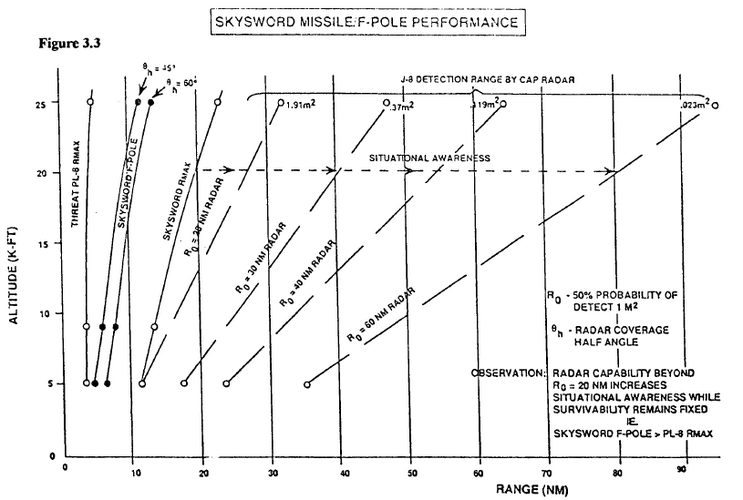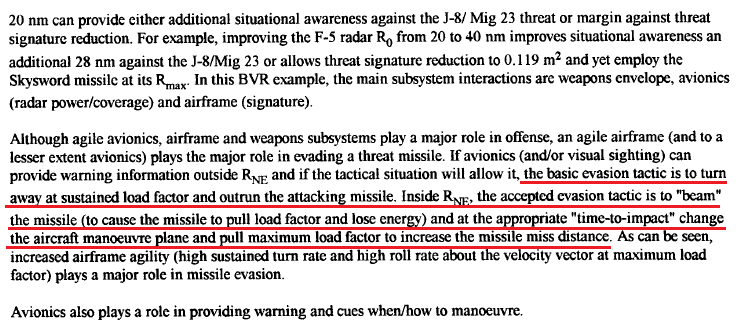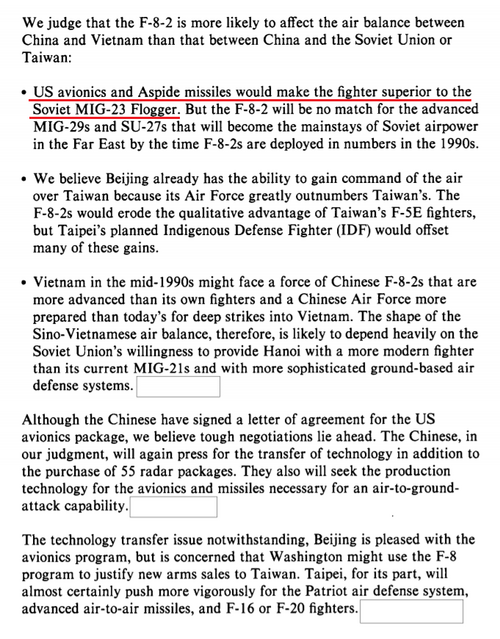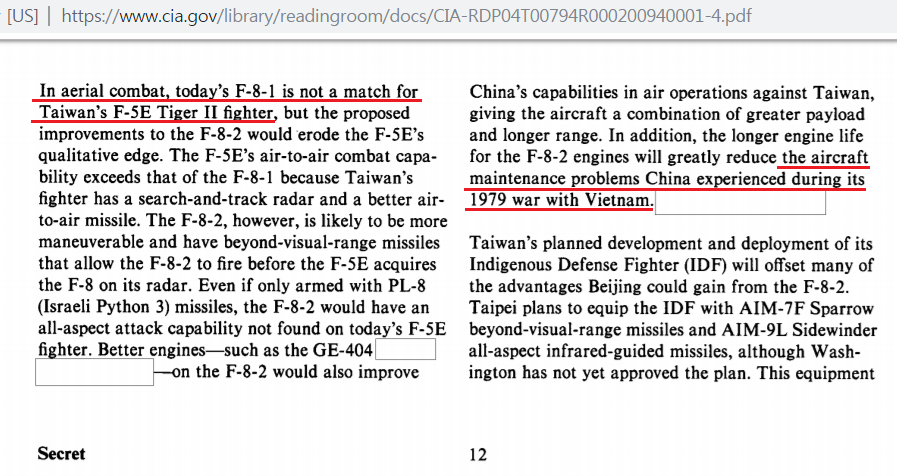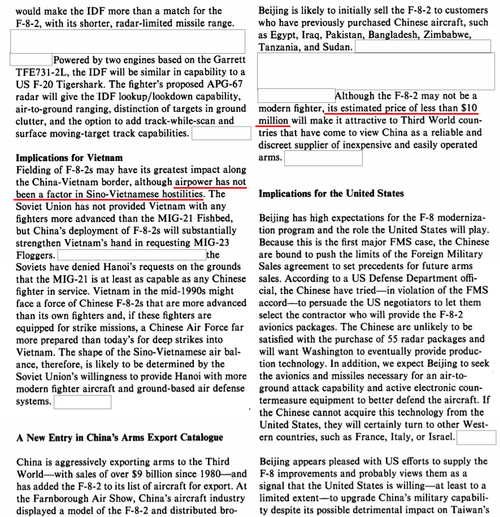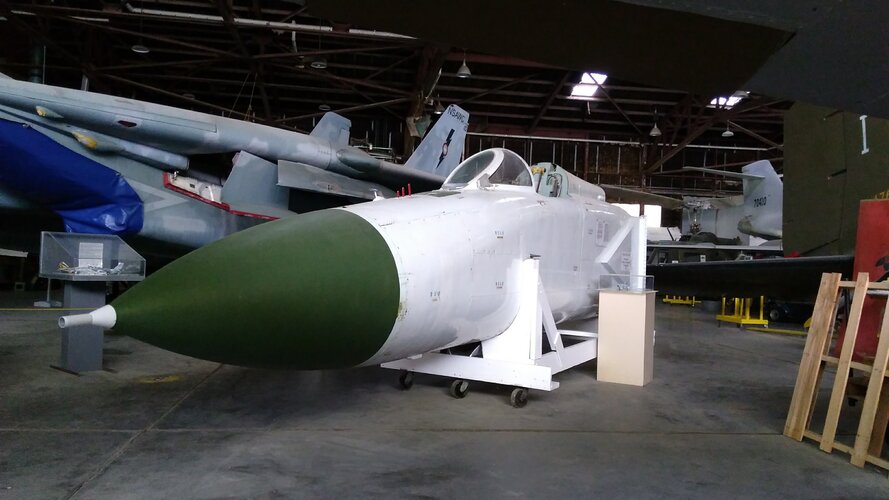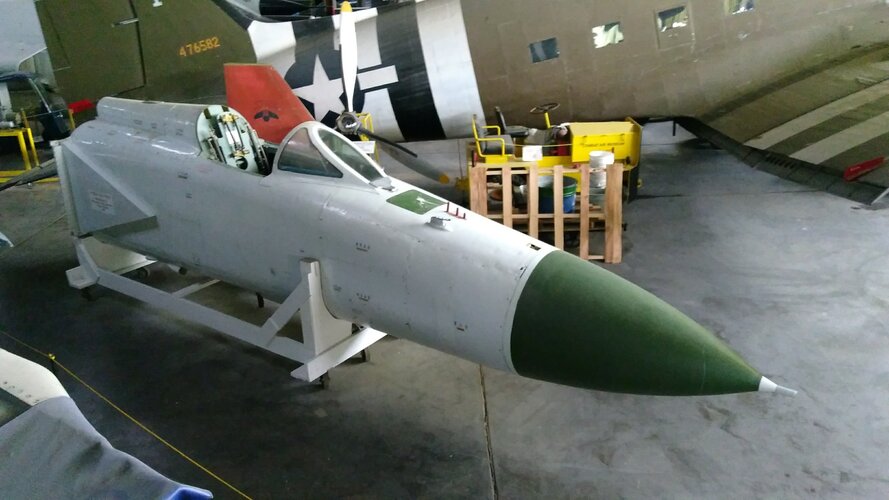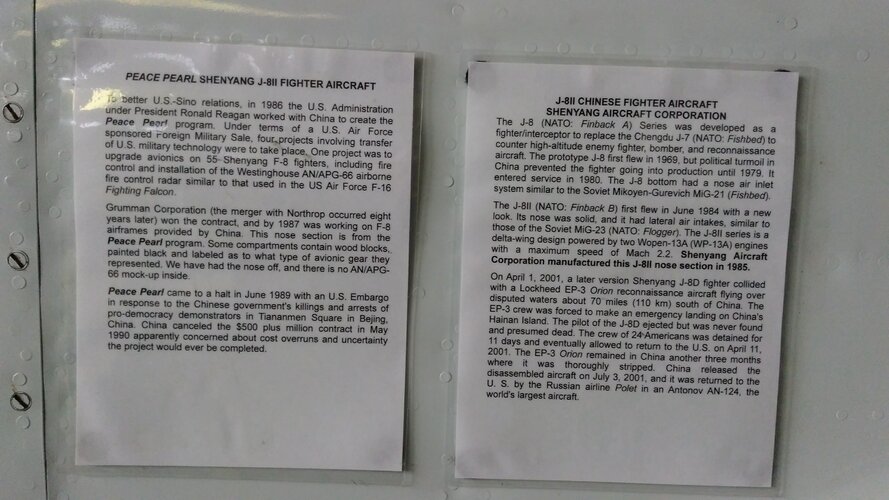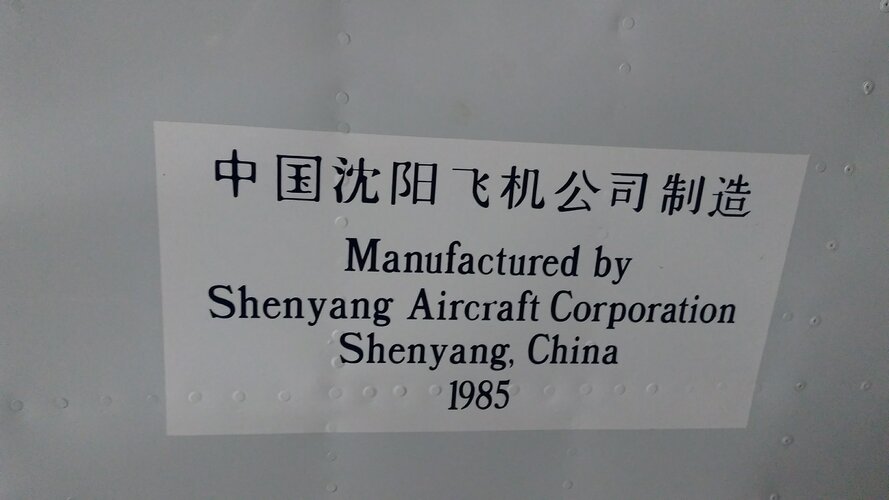PEACE PEARL PROGRAM
Following decades of virtual hostility toward one another, relations between the People's Republic of China and the United States gradually began to thaw during the 1970s and 1980s. Several factors led to this change including President Richard M. Nixon's visit to China in 1972, negotiations during the Jimmy Carter administration, granting of "most-favored nation status" to China, and President Ronald Reagan's visit in 1984. This created a climate conducive to improved relations between the two superpowers. The Chinese faced an increasing threat from the Union of Soviet Socialist Republics, who had amassed a significant military forcealong the Sino- Soviet border. Consequently, the Chinese made overtures to the United States for technological assistance in developing subsystems for their new F- 8II interceptor aircraft. Assistance such as this fell within the realm of the Foreign Military Sales program and the United States had to tread lightly andtake existing agreements with friendly nations into consideration. The United States especially did not want to damage its alliance with Taiwan.
The American government also remained concerned about China's ability to protect the security of any technologies provided to them under the program. However, the possibility of building "an enduring military relationship" with the Chinese as a way of countering and balancing the Soviet threat in East Asia outweighed these concerns. Representatives from both countries had outlined the program by 1984 and the Aeronautical Systems Division (ASD) was awareofthe proposed sale early in that year. Responsible for overseeing the program, ASD would develop, test, and acquire the system(s)needed. This would be accomplished through the Foreign Military Sales program by an American contractor. In May 1984, a Chinese delegation came to the United States and visited military, industrial, and government organizations, including Wright Patterson Air Force Base. During 1986, ASD continued the contractor selection process and received the mock-up of an F- 8II from China. Officials from ASD arranged for the mock- up, which arrived in a bamboo crate, to be stored in Hangar 255. Late in the year the Chinese established a liaison office at ASD and in January 1987, ASD hosted a Peace Pearl Configuration/Training Conference .
In May 1987 , Secretary of the Air Force Edward C. Aldridge, Jr. , visited ASD to inspect the mock-up and learn about Peace Pearl. After three contractors submitted proposals, ASD awarded the contract to the Grumman Aerospace Corporation. Program officials anticipated more bids, but approximately 15 other companies had dropped out of the competition for various reasons. As Grumman undertook the contract, frequent roadblocks hindered the company's ability to provide the services required. The persistent lack of technical data on the new Chinese fighter and frequent design changes severely limited the company's ability to do its job. Despite this, work progressed and the Air Force arranged for two F- 8II aircraft to be brought to the United States in January 1989. To accomplish this, ASD sent several engineers to China with an American airfield survey team to help the Chinese prepare their aircraft for shipment. The team evaluated the airfield's capability to handle a giant C-5B Galaxy and advised Chinese officials how to effectively pack and protect the aircraft and related equipment to make the best use of the transport plane's cargo capacity. The airlifter successfully transported the F- 8IIs , disassembled into three pieces, to the United States .
Just as Peace Pearl appeared to be well on the way to successful completion, a major world event stopped all progress dead in its tracks. In June 1989, Chinese forces committed an act of repression that again changed U.S. foreign policy toward the communist country. The Tiananmen Square incident, where Chinese soldiers fired on civilian demonstrators, caused President George H. W.Bush to suspend all foreign military sales to the People's Republic of China in retaliation for the human rights violations. Consequently, the Air Force denied access to Chinese personnel at Peace Pearl work areas at Grumman and Wright- Patterson. The Chinese reacted to the president's sanctions by temporarily halting payments to the program trust fund. Grumman had performed ground tests on the aircraft and was approximately five months away from beginning flight testing when the Chinese abruptly announced they were terminating Peace Pearl. Chinese officials claimed the suspension had caused unacceptable cost increases. Initially, the United States declined to return the two F-8IIs to China because of the existing presidential suspension, but this was lifted in February 1992 and the aircraft were returned by ship.
Despite vast cultural and technological differences, Peace Pearl was well on theroad to success when China terminated the program. This is unfortunate because Peace Pearl could have led to more cooperative ventures between the two nations. Regrettably, several factors slowed the progress of Peace Pearl and led to cost overruns. China's inherent secrecy impaired Grumman's ability to do its job, and the lack of a standardized aircraft design frustrated those working on the system. Still, those involved with the program fondly remember the personal relationships they developed with the Chinese as they worked through cultural barriers.
Sources: History of Aeronautical Systems Division,Janurary-December 1986, Vol I , pp 177-179; DrBruce R. Wolf, Peace Pearl (U- FOUO) , Aeronautical Systems Center, c.a. 1991 ; personal communication, Ms. Virginia Brown, Peace Pearl program,w/J. Ciborski, ASC/HO, March 8, 2002.

